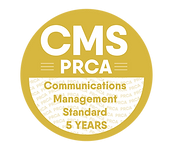Where do the political parties stand as they prepare for Stormont return?
30 January 2024 - by Matthew JacksonThe announcement by Sir Jeffrey Donaldson that the party will return to Stormont, pending the government delivering on legislative commitments, comes just three days before the second anniversary of the withdrawal of Paul Givan as First Minister on 3 February 2022. While all eyes have been on the internal workings of the DUP, other parties have had time to formulate policy positions and gameplan the various political twists and turns that lie ahead in 2024 and beyond, not least the next UK General Election.
Understanding their drivers and priorities is important in your engagement with any returned Assembly and Executive. So what of the state of the other parties, and where do their priorities lie?
Sinn Féin
Mary Lou McDonald today described Michelle O’Neill’s anticipated taking up of the First Minister position as a moment of “great significance.” This will be celebrated by the party and its supporters. However, the new and inverted dynamic of joint leaders in the Executive Office, Sinn Féin and the DUP lead an Executive in which Sinn Féin are now the largest party and which now must collectively grapple with two years of policy backlog and address challenges around fiscal sustainability.
It has been notable that key figures in the party have been talking up the fact that the DUP’s abstention was due to their struggle with accepting a Sinn Féin First Minister, which reflects the changing balance of power on the hill, and perhaps their readiness for an election, with the success of the “First Minister for All” mantra seeking to pick off the SDLP and middle ground vote.
The Red C poll at the weekend showed a further drop in Sinn Féin’s support in the Republic of Ireland to 26%. The party will be keen to show a record of delivery in the Assembly and Executive, particularly as it prepares for the next Irish general election, scheduled to take place before March 2025 as well as local and European Parliament elections in June this year.
Alliance
With nine new MLAs since the last mandate and an additional seat around the Executive table, how will Alliance deploy its increased power as the third largest party in the Assembly? Naomi Long said today she enjoyed the Justice portfolio, but “wasn’t wedded to it.” Will it take Justice? And if not, how will this impact its entitlement?
Their consistent focus on reform will likely form a strong part of their approach both in the Executive and on the floor of the Assembly, understandably given that their vote in some circumstances is not worth the same value as their Nationalist and Unionist colleagues.
UUP
Will it take up its Executive seat or join the SDLP in opposition? How will unionism emerge from what has been a bruising few weeks?
With the DUP now heading back into Stormont, the TUV will command the space of the hardline anti-protocol position, and so how will the UUP position themselves against a DUP that is showing it is committed to power-sharing?
The UUP as a party have appeared relatively settled and consistent in recent years, with their party leader seemingly finding his stride after a bumpy start. More questions than answers here, but an interesting time for Doug Beattie’s party to reflect their understanding of what it means to be unionist and a devolutionist in a post-Brexit Northern Ireland.
SDLP
With Matthew O’Toole positioned as leader of the opposition since the May 2022 election, the opportunity is now for party renewal and holding the Executive parties to account from the opposition benches. How effective they are in opposition could unlock electoral gains if they can use the opportunity to position themselves as a real alternative to the narrative of Sinn Féin and the Alliance Party.
More urgently, the battle to retain two hard fought for Westminster seats in Foyle and South Belfast will be at the forefront of the party’s plans.
Irish Government
We saw both the UK and Irish Governments jointly announce New Decade, New Approach in January 2020 to restore the institutions. This time around, the deal has been reached between the DUP and UK Government, with a Command Paper due to be published tomorrow setting out the deal in more detail.
What now for the Irish Government? Will we see the return of the North-South Ministerial Council? And how will Dublin continue to deploy its financial resources in key policy areas of mutual interest including health, infrastructure and climate?








